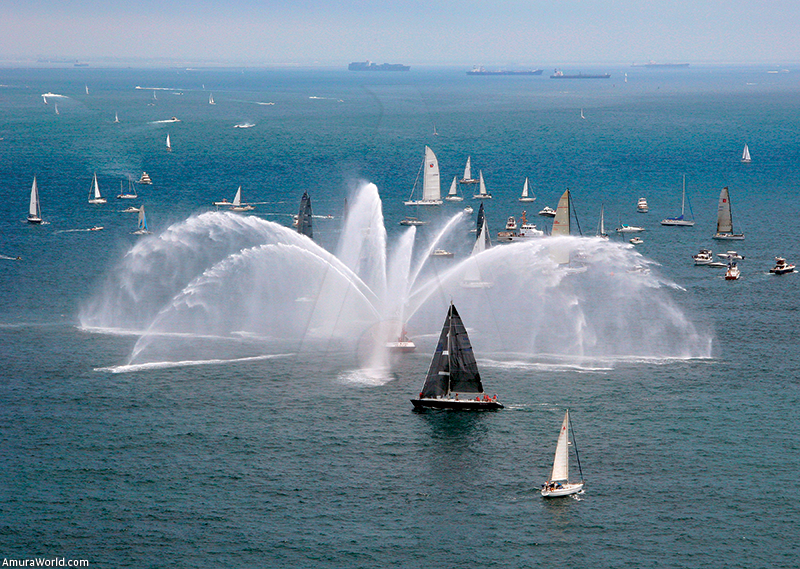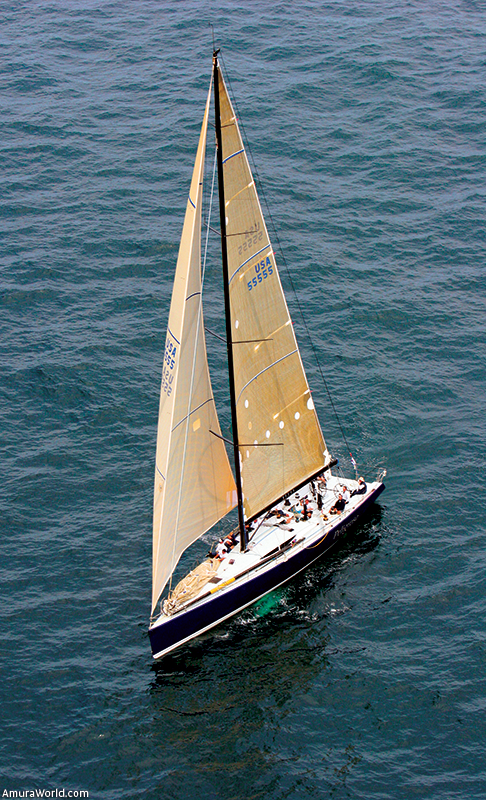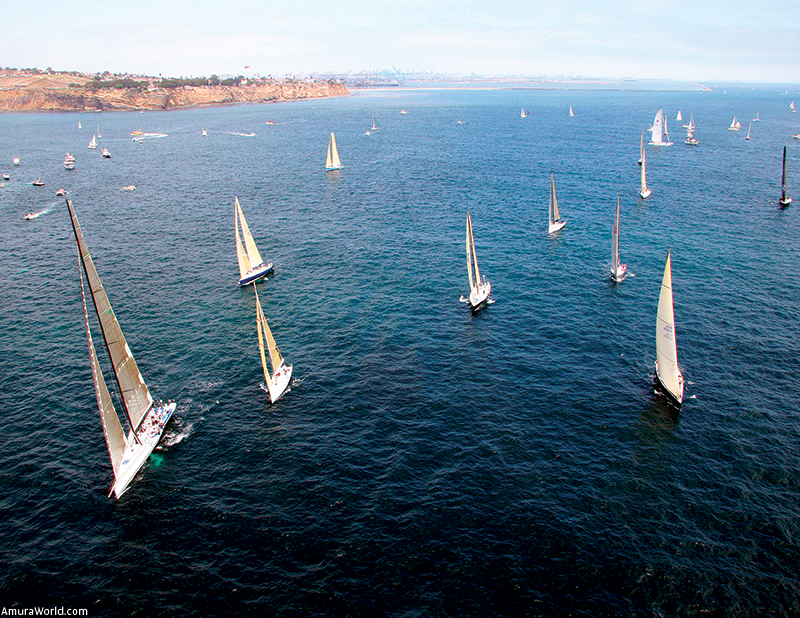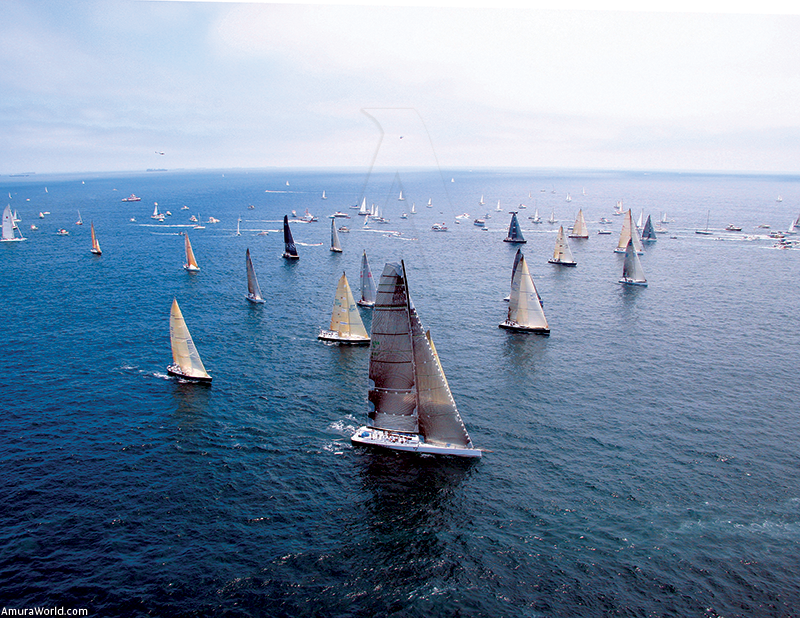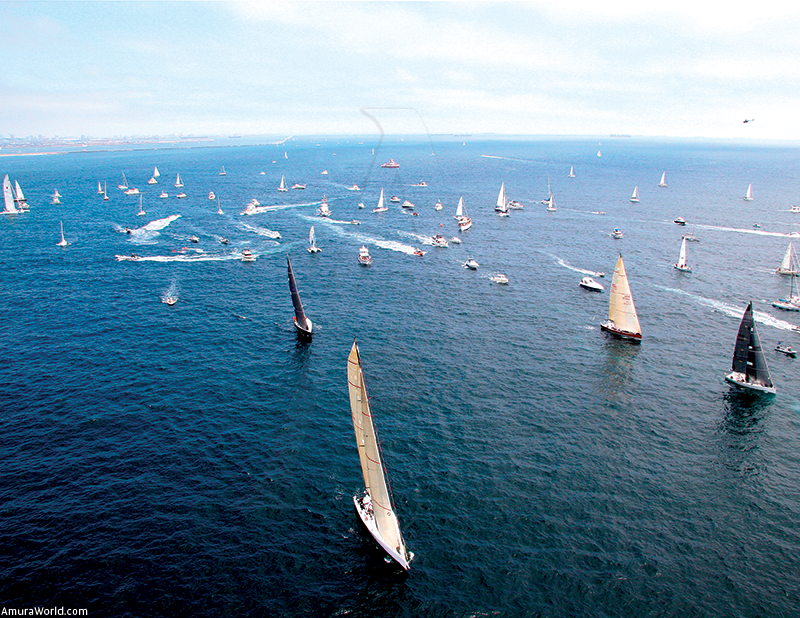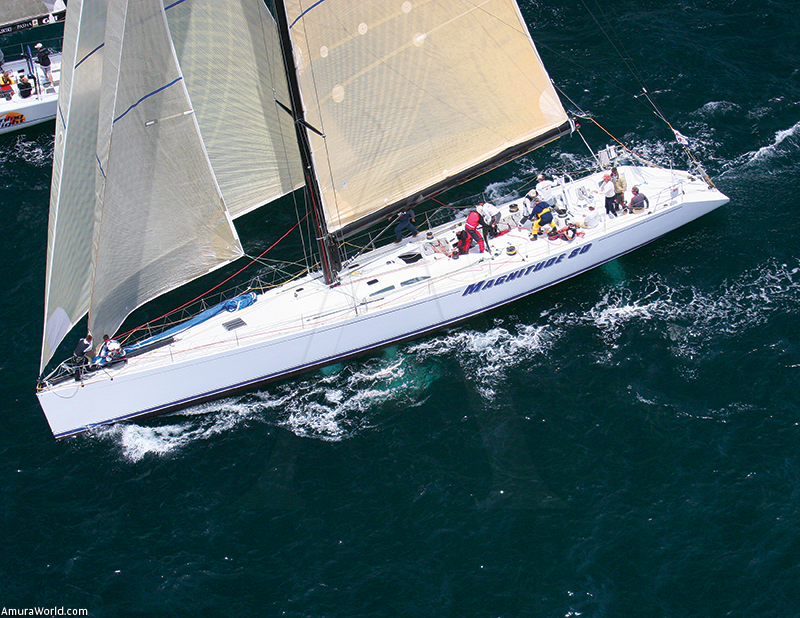A regatta is great challenge for any yachtsman, and if we are talking about a regatta that goes from Los Angeles to Hawaii, the challenge becomes an odyssey to be completed in as short a time as possible. It can only be achieved by forming a true team. Raúl Velarde Cardozo, of the Ruahatú team, chats to us about it.
AMURA: Raúl, can you tell what exactly the Transpacific Yacht Race is.?
RVC: This regatta goes from Los Angeles to Hawaii and is famous for being the oldest of them all; among all the regatta series in the world, it is the most traditional. It is 102 years old and attracts all types of sailboats and yachtsmen from all over the world. There is a large group of yacht classes that varies from 70 to 30 feet in length.
AMURA: So, the sporting part is not as important as the celebration of sailing?
RVC: I think that both are important and also one wants to win because it is a very technical regatta from the navigation point-of-view. In the 1940s and 1950s, a more-direct route from Los Angeles to Hawaii was created, which was a straight line; however, halfway along the course, you arrived at a place where there was no wind and had to wait 2 or 3 days for it.
AMURA: How long does the Trans-Pacific last and how many boats and yachtsmen take part?
RVC: This competition takes place every two years and almost 80 yachts compete. If you assume that each boat has a crew of 10, that’s a figure of 800 participants. The fastest boats complete the course in 7 days and the slowest in 15; double the time.
AMURA: What type of boat will you use?
RVC: We’re sailing the Ruahatú, a 47’ Concordia designed by Fash and is a combined boat; very good for racing and cruising. It’s not like one of those with nothing below decks, it has a galley, beds, cabins, everything.
AMURA: What is the challenge of this regatta?
RVC: It is a challenge for navigators that is competitive all the time, in which you’ll continue to get the highest speed as you can from the yacht and this means working 24 hours a day, constantly making adjustments to the boat.
AMURA: What is life like aboard?
RVC: The first regatta is setting off and passing Catalina Island, where you have to have a strategy to take advantage of a current. You go out in the day’s breeze in the morning; it is the typical regatta when everybody as if heading for a buoy at the point of Catalina, from there the strategic concentration is how you sail through that channel of Catalina because there is a current and the objective is that you arrive at the synoptic wind; that wind that you use to set off will end because it is a breeze. At 6 or 7 p.m., the wind will stop so you had better arrive with these winds because they are gradient winds that do not depend on the heating of the day’s breeze.
The first part of the regatta is to ask how I reach that synoptic wind, because if you don’t on the first night, you will be left without any wind at all, or only very light winds and the whole crew is very involved in setting off and they are sailing through this wind changes in order to reach the synoptic wind.
You can get the information of how the wind close to the surface of the sea is behaving, as well as the currents until you have some waypoints because afterwards when you are at sea and you say where you are heading, you can mark some intermediate waypoints of where you want to sail.
AMURA: What types of technology do you use for support?
RVC: There are two types of access; one is the lateral-band radio which he used to download the marine charts, forecasts and suspension diagrams of the high-pressure surfaces and using the satellite telephone you can download files known as ripped files, which are digital, as well as forecasts of wind speed and direction. You input this in the computer to generate the optimum route but as these forecasts are models, you have to compare them with a reality at all times. You have to keep on making this adjustment. Those files are updated every six hours.
As navigator, I log onto the Internet every six hours to download the file, I interpret it and then I generate the adjustments to the initial waypoints that we had proposed. We discuss the most tactical parts of this information with two or three crew members and then form a strategy.
After five or seven days, the forecasts become exhausted if you don’t have a routine aboard the yacht. With all the experience we have, we take watches; every hour a new crew member comes up to relieve the crew member on watch, so in general terms, 4 are working, we have crew of nine, so four are working and four are resting
It is a very difficult regatta to sail, because when at sea you’re not used to some crossed waves, since night you can see anything, it’s very foggy, the only thing you have a night to guide you are the instruments, some navigation lights on the mast
We have had various intense experiences, like being asleep and the wind suddenly increases from 15 to 35 knots, but it doesn’t turn you have that is the difficult and waves can break the sail, or rip the Spinnaker to shreds; that is an intense experience. All when there are squalls and we have to monitor them, which is it teamwork task because your watch and the radar and you see how the squall comes in, if you are very brave you sail in front of it, which makes you move much faster, but it catches up with you so you have to move out of the way otherwise it will pass over the top of you leaving you without any wind.
AMURA: And how do you arrive in Hawaii? And once onshore, what happens them?
RVC: There is a party; the most exciting thing that I have heard is when you cross the finishing line they shout “Welcome to Hawaii, you’ve finished the Transpac”. It is a regatta in which the excitement heightens, you start to arrive from the winds to the trade winds and then the arrival in Hawaii and you start to see the islands and then you sail through the channel of Molokai, which is the most difficult thing because the entire Pacific narrows creating very high waves and a lot of wind, which is when it gets exciting.
AMURA: How can you sum up the concept of the voyage in a few words?
RVC: It is a state of euphoria; it is something more exciting, more spiritual.
Text: Enrique Rosas ± Photo: Mike Reed / Tom Heaton / Piloto velas • sails Michael Christmas.

